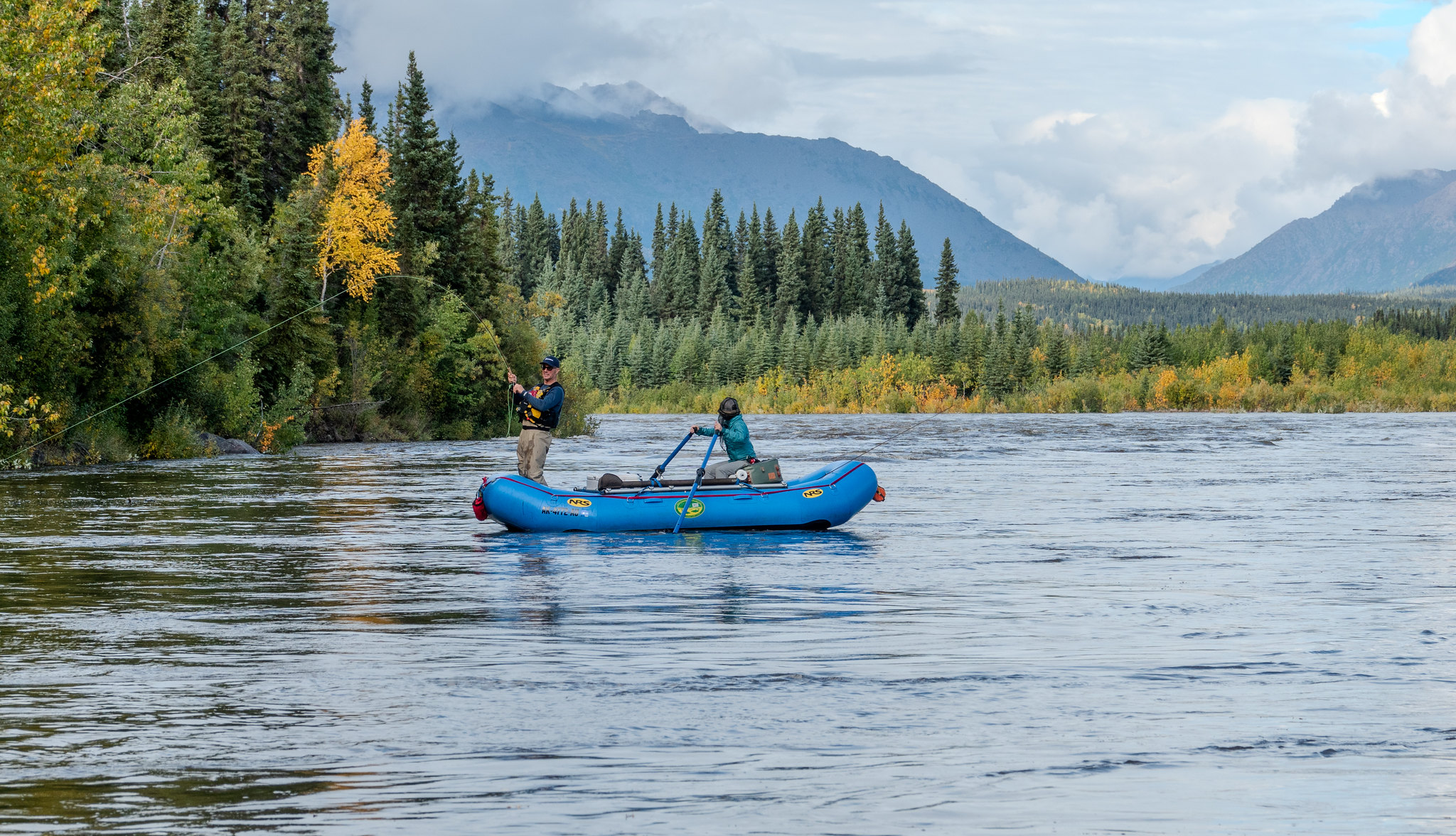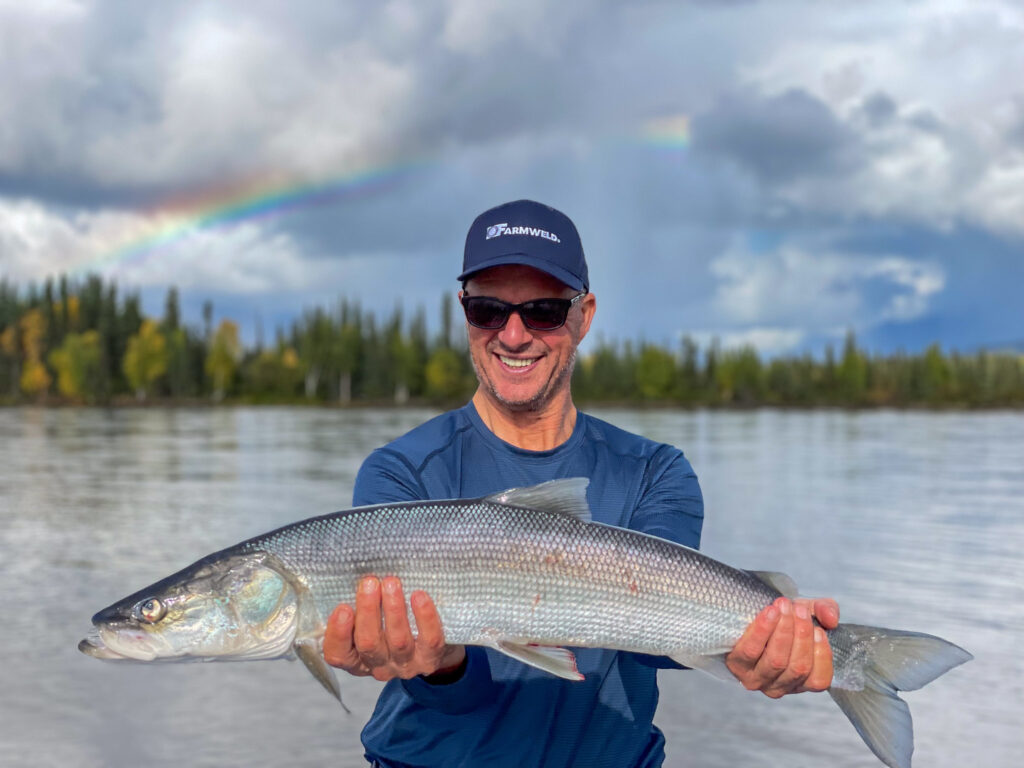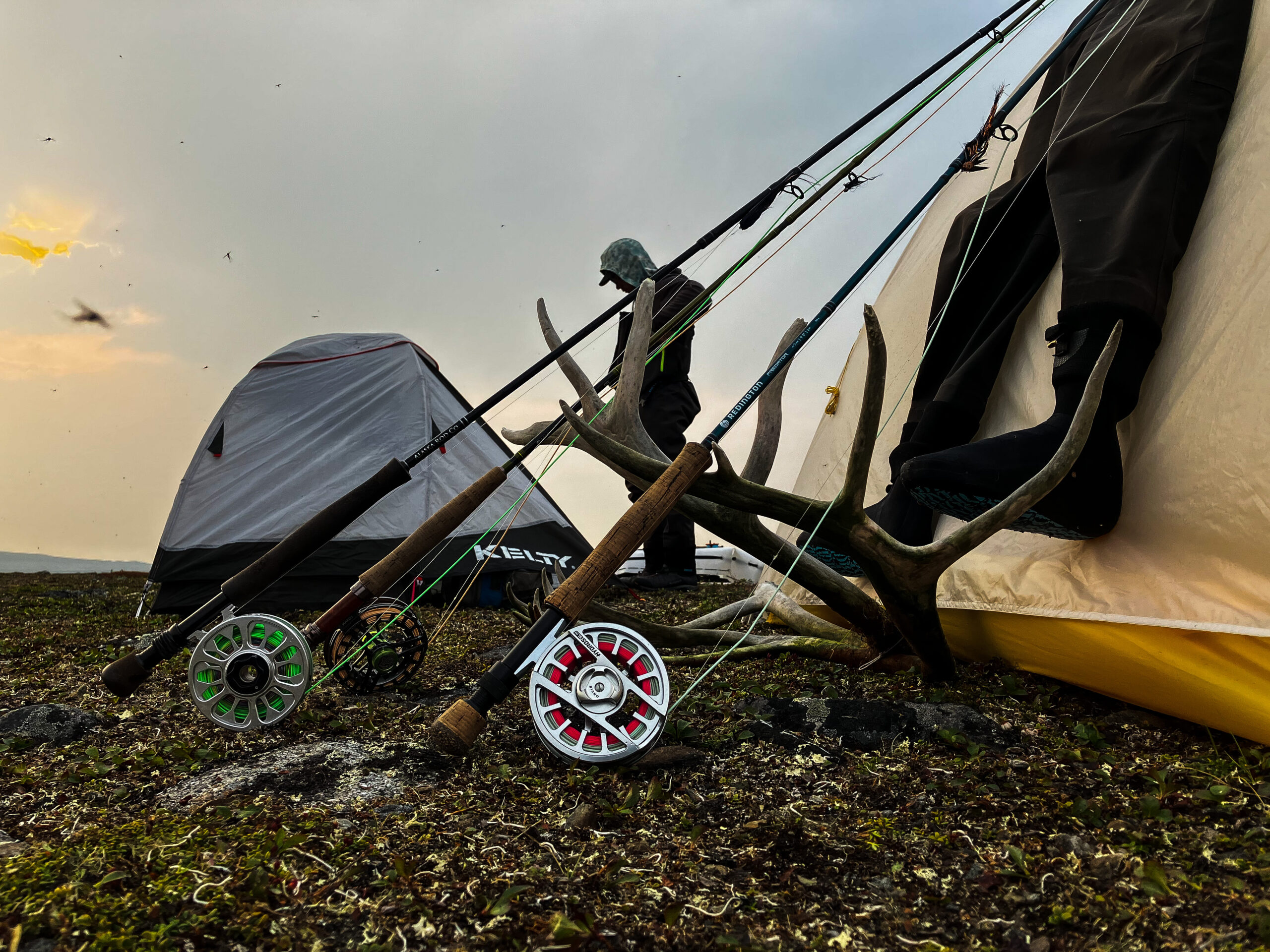Floating the Kobuk River for Sheefish
A trip of a lifetime through Alaska’s Brooks Range is also a wakeup call – here's what's at stake for anglers if the Ambler Industrial Road were to get the green light

[This is part two of a series on Northwest Alaska’s sheefish and how the proposed Ambler Road might affect their population. Click here to read part one about ice fishing opportunities near Kotzebue.]
The Kobuk River runs 380 miles from its headwaters in the southern Brooks Range to where it empties in the Chukchi Sea near Kotzebue. The upper 125 miles, from the put-in at Walker Lake to the Iñupiat village of Kobuk, is a renowned float trip. In fact, it’s common to hear even seasoned wilderness hunters and anglers describe a float down the Kobuk River as a trip of a lifetime.
You can do it in a week, but people who’ve made the trip recommend taking two weeks to best experience this incredible place. You can pull out at a handful of other villages below Kobuk, with the lowest on the river being Noorvik, if you want to go even further.
Fisheries ecologist Kevin Fraley has seen a lot of the wild country Alaska has to offer, but a big part of what makes the Kobuk so special for him is its sheefish. The Kobuk has the best run — and the largest sheefish — in North America. The upper river is clear water, which allows anglers to see large schools of sheefish in the limited areas where they congregate to spawn. It offers a very visual and exciting aspect to a fish that is known to hit hard and put up a good fight.
Fraley calls his first recreational trip down the Kobuk a trip of a lifetime but also a wakeup call.
“It really made me aware of the Ambler Road’s possible impact,” Fraley says. “It was kind of an awakening to me that many sheefish spawning areas are just downstream of where roads and mines would be if the road was built.”
Fraley is working on a study funded by the Bureau of Land Management (BLM) to get baseline contaminants data from fish in sections of the rivers that the proposed Ambler Road would cross. The 211-mile industrial corridor would cut through the southern flanks of the Brooks Range and be used to develop an unknown number of foreign-owned mines.

Most of the concern you hear about the project’s potential negative impacts is related to the Western Arctic Caribou Herd. But another big risk is damage to freshwater aquatic ecosystems. Much of the Ambler Road’s route is through fragile wetlands and near the sensitive spawning grounds of sheefish and other species.
Beginning in late summer, in a handful of watersheds in western and interior Alaska, sheefish migrate to their spawning grounds in the upper stretches of rivers. Fish are around 10 years old before they spawn, an event that occurs in late September and early October. Post spawning, some sheefish live off their reserves for most of the winter, while others travel back to the coast and feed on herring and smelt. They can live more than 30 years and weigh up to 60 pounds.
Freshwater flyfishing guide Greg Halbach of Remote Waters guides anglers targeting sheefish on the Kobuk. Like Fraley, his first float of the river was a revelatory experience. He went into that trip to see if it could be viable for him to lead small flyfishing groups after sheefish. Halbach was preoccupied with the fishing part of the journey, but the wild beauty of floating along the southern flanks of the Brooks Range left a deep impression on him.
“I’ll never forget my first sighting of a sheefish,” he says. “I was standing in my inflatable kayak, using it like a stand-up paddle board, and I saw this huge shape in the water. My mind was blown. It was a mad scramble to get a fly out there. After that, I was hooked. It still kind of blows my mind when a client hooks up a huge anadromous fish that looks an awful lot like a tarpon from a river way up in the Arctic.”
Halbach is not just worried about how the Ambler Road would affect the sheefish population.
“A big part of what I offer on my trips is providing my clients with an opportunity to immerse themselves in a landscape that is wild and remote in a way that very few places anywhere else still are,” says Halbach. “A float down the Kobuk River that included floating under a bridge and listening to the hammering of engine brakes from tractor-trailers would be a radically different recreational experience.”
Tom Phillips first floated the Kobuk River in 1996 or 1997. “It is a trip of a lifetime, and I’ve had the luxury of doing it every year since,” Phillips says.
He nearly died on that first trip, though. Just below the put-in at Walker Lake, the Kobuk has its most difficult rapids. It’s vital, Phillips said, to scout it before running it. Some years, particularly in August if it’s been raining hard, it’s not navigable due to sweepers—a fallen tree or trees in the river, which can take out a paddler and, sometimes, pin them underwater. Phillip’s trip partner was in a rush to run the rapids without scouting. A sweeper took Phillips out and he got thrashed and injured on a boulder.
The rest of the trip was miserable, but at one camp, Phillips inadvertently got into a school of sheefish. He and his partner caught between fifteen or twenty before they finally got a small one — around 14 pounds — that they kept for dinner.
“They’re really, really big fish,” he says. “They can fight. You can catch them on anything shiny. A small one is 15 to 20 pounds. I went back with a different partner the following year and we took our time. It was a really great trip. I’ve done it every year since and caught sheefish every time.”
Phillips recognizes that some locals want the Ambler Road, but he agrees with the many who don’t. “It’s certainly going to mess up the area,” he says.
According to the folks who’ve experienced it, there’s truly no place like the Kobuk River, and there’s no fish like the river’s sheefish. It remains an exceptional backcountry angling opportunity because of its isolation.
Kobuk sheefish are one more reason in a long list of why the Ambler Road is a bad idea.
Sign the petition to defend these resources and unrivaled backcountry fishing experiences.
Header Image: Photo: Remote Waters



